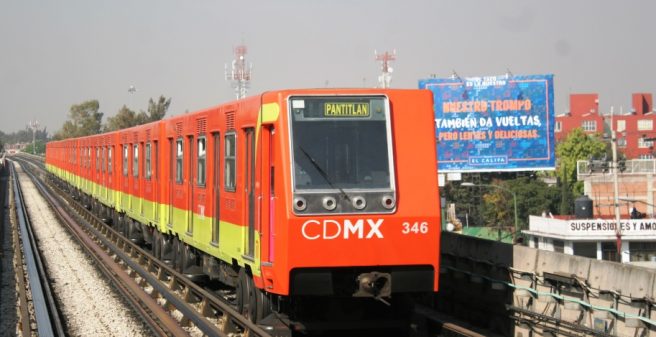
Even the Google Doodle – that is how Google calls its’ logo is used to commemorate holidays, events, achievements, and notable historical figures – has been altered to Mexico’s metro iconography for its’ 50th birthday in Mexico. On 4 September 2019, the metro of Mexico City, became 50 years old. On this day in 1969, Mexico’s first 12.7 km metro line of the Sistema de Transporte Colectivo (STC) started operation between Chapultepec and Zaragoza. The metro was inaugurated by the then-president Gustavo Días Ordaz and the city’s mayor Alfonso Corona del Rosal who both took the inaugural train. Commercial operation started on 5 September 2019. The rolling stock was supplied by the then called French company Alsthom (today Alstom). The so-called pneumatic metro, MP68, was built in Paris and shipped to Mexico. Alsthom supplied a total of 60 trains between 1968 and 1970. Construction of Mexican rolling stock only started in 1972 by Concarril, today part of Bombardier Transportation.

Google Doodle Logo which has been shown on the Mexican Google website for the 50th Anniversary of the metro I Source: Google
The history of Mexico City’s metro
The main motivation for the construction of the metro in Mexico City was the massive population growth in the 1950’s and 1960’s. Mexico City used to have 540,000 inhabitants at the beginning of the 20th century. In 1953 the numbers rose to 3.5 million and in 1960 there were 4.5 million people living in the city. The existing tram, trolleybus and bus system were not sufficient to bear the transport demands and discussions to introduce a metro system started. In the beginning, the government was reluctant to implement a metro due to the geographical preconditions, leading regularly to strong earthquakes. After several technical studies, the Días Ordaz administration approved the metro plan and construction started in 1967. The first section of line 1 runs fully underground and has been built with the cut-and-cover method. During the construction phase of line 1 and the other metro lines, many Aztec monuments have been discovered in the grounds of Mexico City. This is not surprising as the city has been built by the Spaniard colonists on the grounds of the destroyed Aztec capital “Tenochtitlan”.
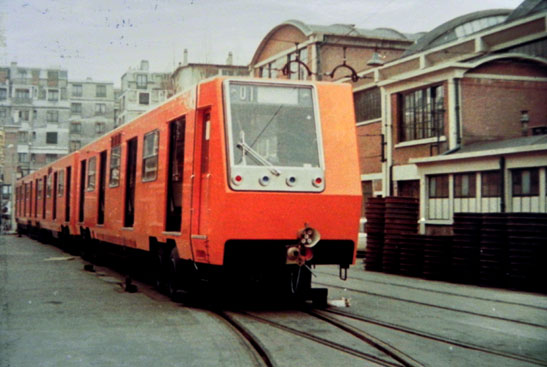
The first Alsthom (now Alstom) metro type MP68 in France before being shipped to Mexico in 1968 I Source: STC 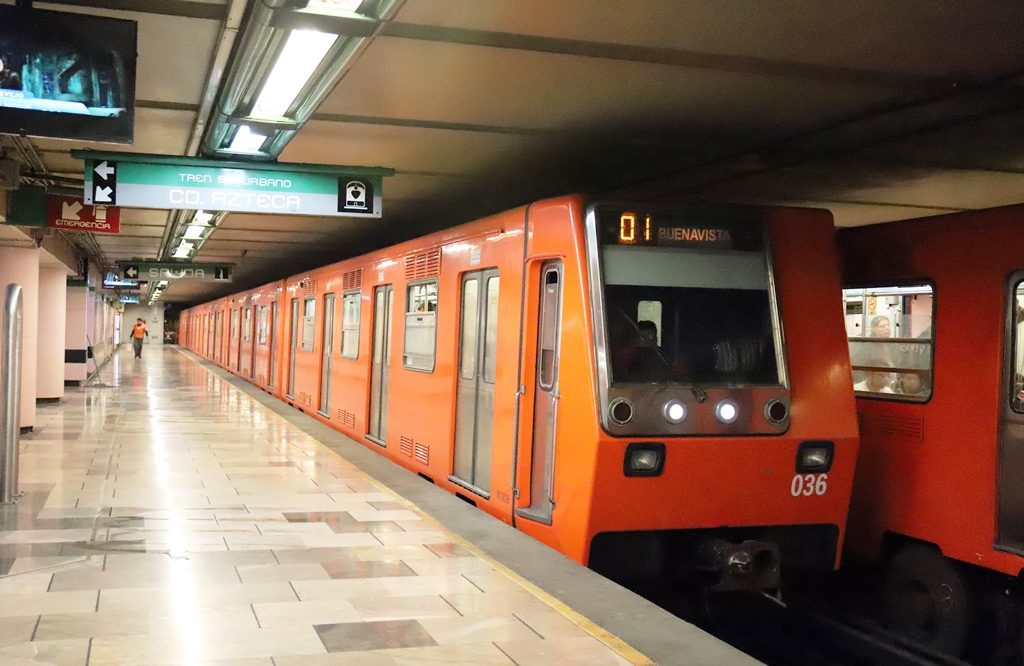
Modernised series M-68R96B train, built in 1968, at the terminus station of Line B in Buenavista. 26 MP-68 have been modernised in 1996 and were fitted with additional head lights I Photo: Stefan von Mach 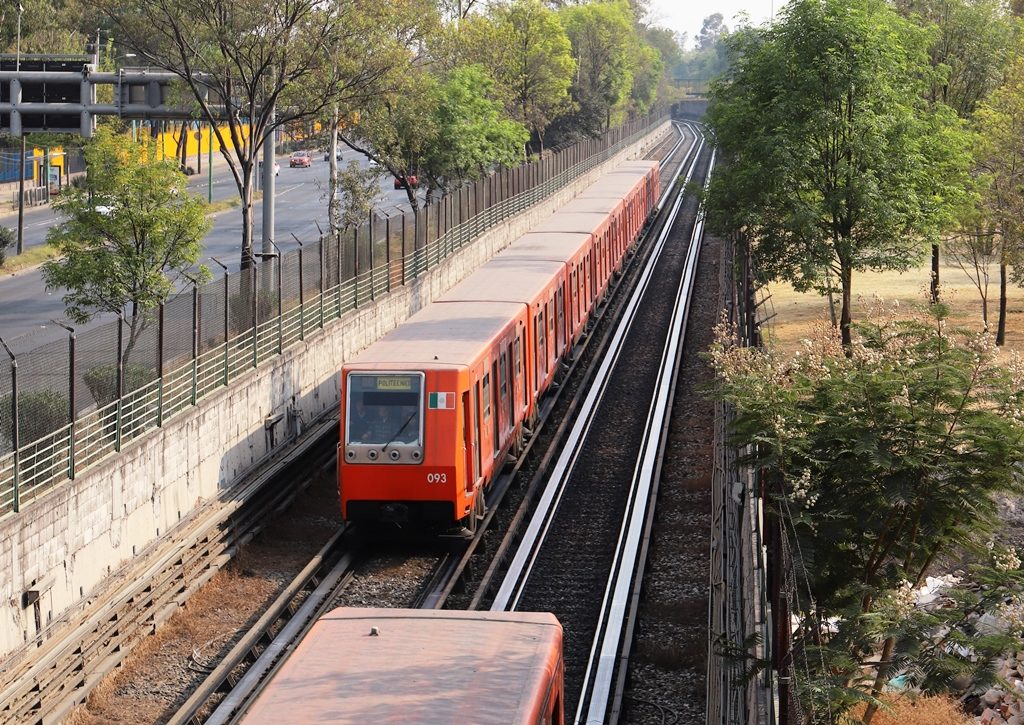
MP68 1st generation train, built in 1968, on line 5 near Instituto del Petróleo – this line section has been opened in 1982 I Photo: Stefan von Mach 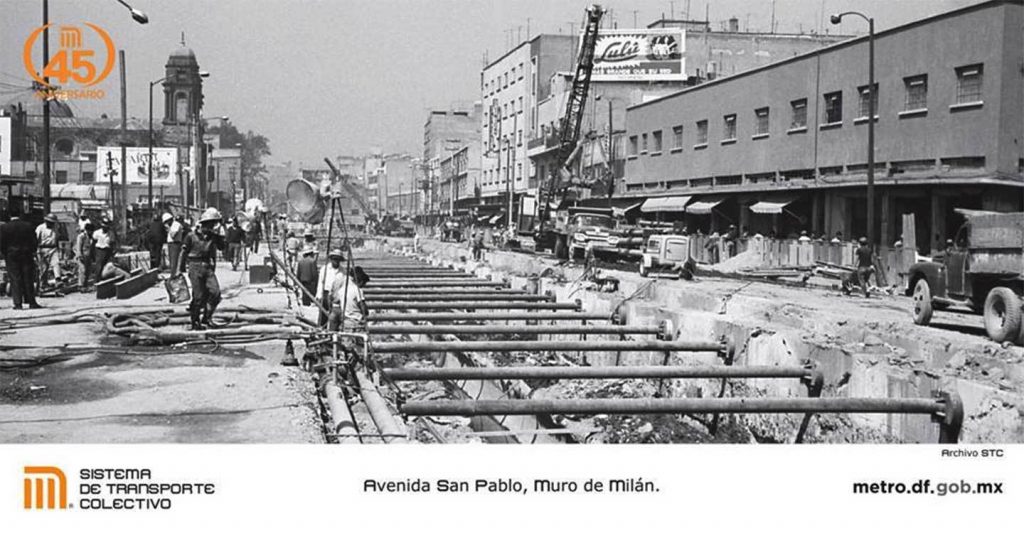
Construction work of Mexico’s first metro line in the city centre of Mexico City I Source: STC
Mexico’s metro today
In the upcoming decades, Mexico’s metro has been widely extended. Today, STC, the metro administration, is operating a network of 200.8 km with 25.7 km of service track, summing up to a total of 226.5 km. Today, the network consists of 12 lines of which 10 lines are pneumatic lines (similar to the metros in Paris and Montréal), running on rubber tyres. The reasoning behind this was higher acceleration and better riding comfort. Only two lines, line A and line 12, are running on steel-wheels. An chronologic overview of all extensions can be found here: https://www.metro.cdmx.gob.mx/cronologia-del-metro
More than 5.5 million passengers are using the metro every day – making it one of the busiest metro network worldwide. The rolling stock consists in 3,333 metro cars which are coupled in six-, seven- and nine-car trains. CAF is currently delivery 16 new NM-16 trains, built in Mexico, which are operated on line 1. Further rolling stock investment is planned as the trains and operation are suffering from reliability and spare-parts issues.
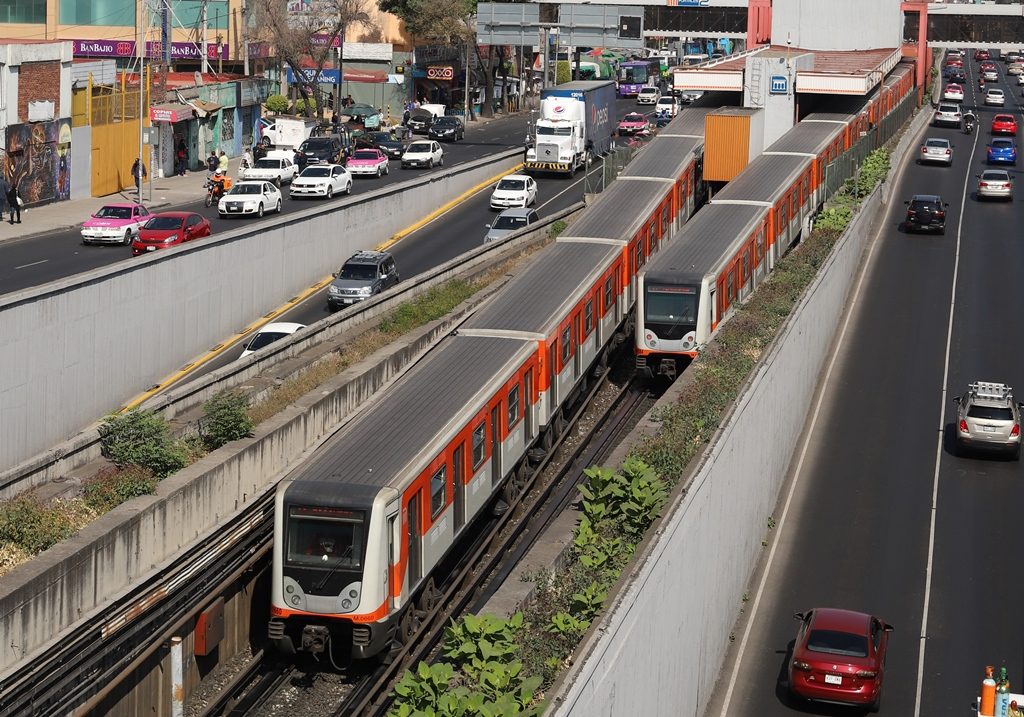
Metro line 2 with two NM-02 type trains, built in 2002 – 2006 by Bombardier Transportation México and CAF. A total of 45 trains were delivered for line 2 which has started operation in 1970 by using the existing right-of-way infrastructure of the Mexico City’s former tramway system I Photo: Stefan von Mach
The metro’s symbols and iconography
Lance Wyman, a Canadian designer, developed a specific iconography and branding for the metro in 1968/67 which is still used today. First and foremost, each line has its’ specific colour. Most Mexicans refer to the pink and blue line, instead of saying “line 1” or “line 2”. Secondly, each station has been fitted with a specific symbol, representing the meaning of the station. By doing so, orientation for younger passengers, illiterates and foreigners is made much easier. And of course, the metro ride gets more fun.
Furthermore, the metro is also used as a space for historical and artistic installations. Several stations showcase archaeological findings of the Aztec times whereas other stations have been decorated with artistic and historical drawings. One of the metro entrances of the “Bellas Artes” station features a Paris-style Guimard entrance which is the result of the Mexican-French cooperation.
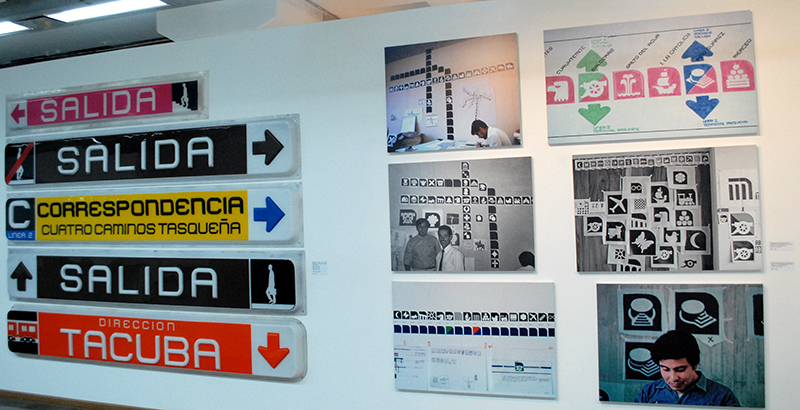
Variants of the metro’s signs and symbols in the metro museum in Mexico I Photo: STC/ Museo del Metro 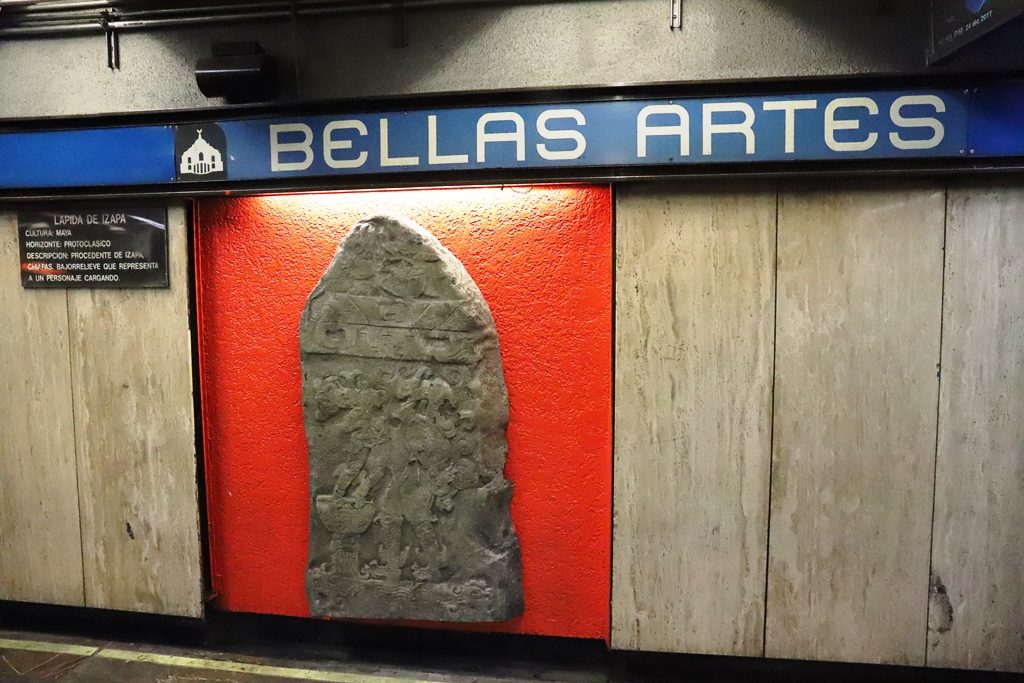
Underground station Bellas Artes under the same name Concert House in the historic city center of Mexico City. In addition to station-specific symbols some stations were decorated with local relics – in the picture a stone tablet of Izapa, a significant pre-Columbian city in Mesoamerica, today the southeast of the Mexican state of Chiapas near the border to Guatemala I Photo: Stefan von Mach 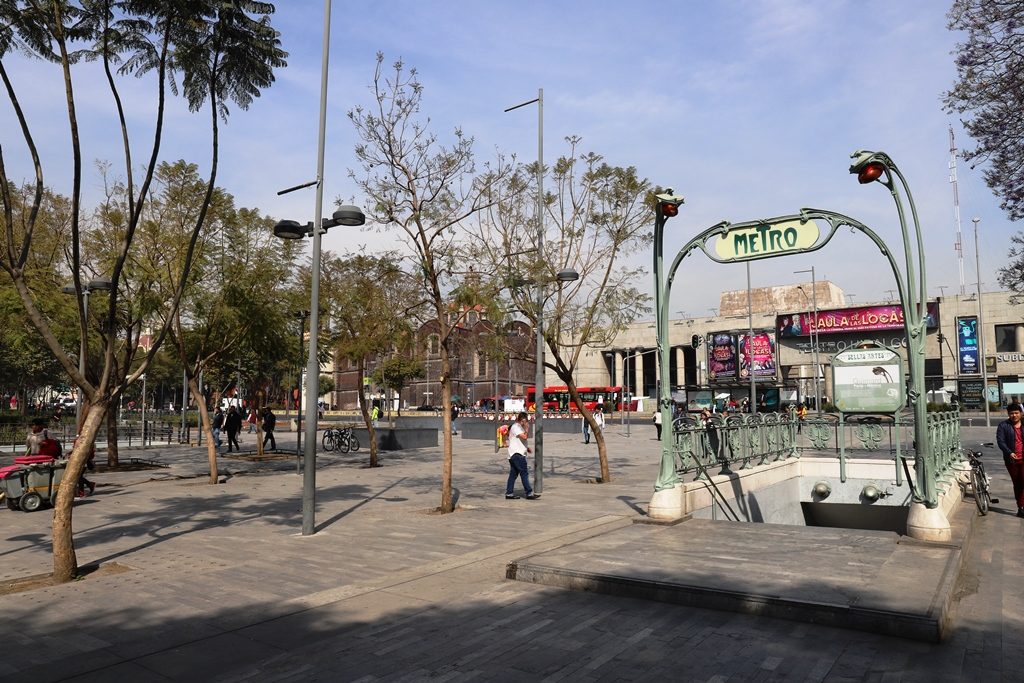
Metro access in Mexico, not Paris, at the Palacio de Bellas Artes. The entrance has been designed by the architect Guimard; it can be also found in Paris in various versions and was installed as a gift in Mexico on the occasion of the 30th anniversary of the collaboration between the metro companies of Mexico and Paris. In return, Paris received a fresco by Wixárika by the artist Santos de la Torre at the Palais Royal-Musée du Louvre, depicting an indigenous figure of Huichol I Photo: Stefan von Mach
The Anniversary celebrations
The metro’s anniversary was accompanied by a number of cultural and historical events. In the city centre, several famous Mexican artist such as “La Sonora Dinamita”, “Santenera” and “Flor Amargo”. Several historical tours have been organised as well as short-film festival.

Mexican musicians during the metro’s Anniversary I Photo: STC/ CDMX 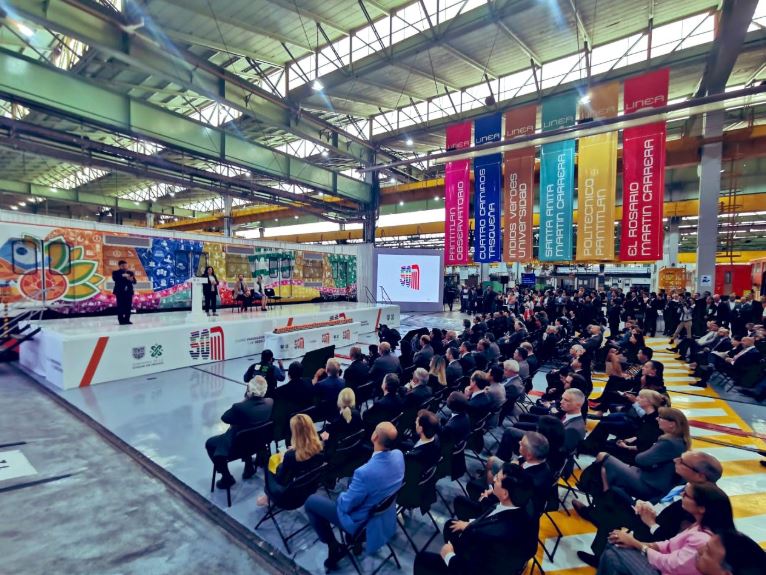
Anniversary event of the metro operator STC with decorated train and guests I Photo: STC/ CDMX
Critical voices
For many, the 50th birthday is also an occasion to look with a more critical eye at the current situation of the metro. The financial and technical situation of the metro is rather worrying after decades of underinvestment. Only ca. 73 % of the rolling stock is operational while the remainder is out of service. Apart from the 16 new CAF trains being delivered in 2019, the last large-scale fleet renewal took place in 2002 – 2006 with the delivery of the NM-02 fleet, built by Bombardier Transportation México and CAF. Stations, the infrastructure and signalling have not been modernised since decades, leading to congestion, overcrowding and low riding comfort – especially in the rush hour. According to media reports, the new government of Claudia Sheinbaum – elected in December 2018 – wants to further invest into Mexico’s metro.
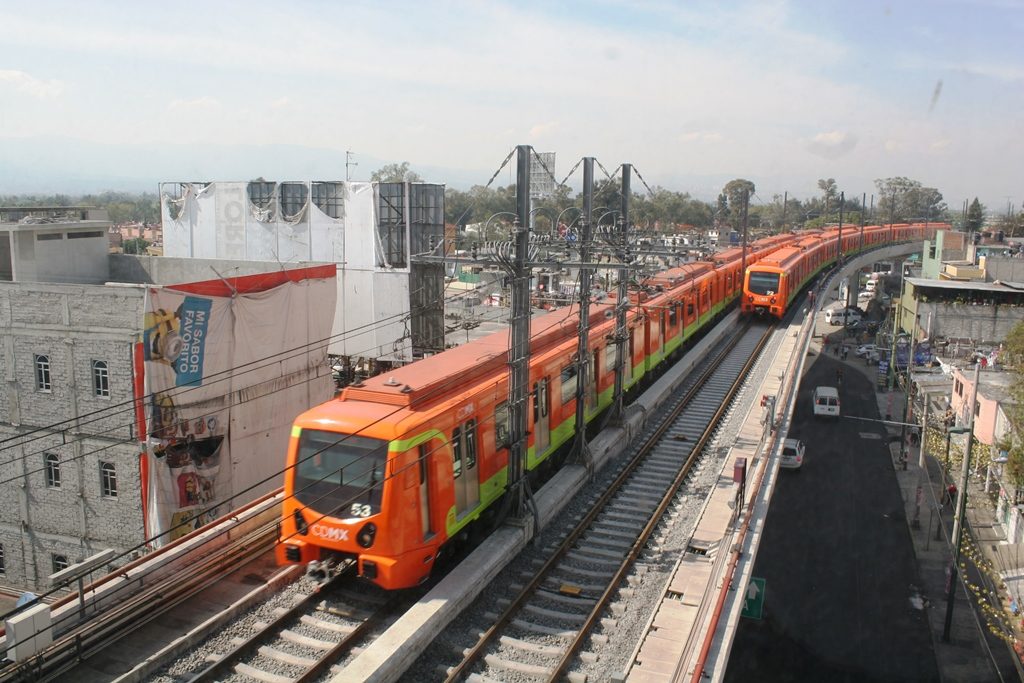
The 25.1 km line 12 has been inaugurated on 30 October 2012 and is the youngest line in Mexico City I Photo: UTM

